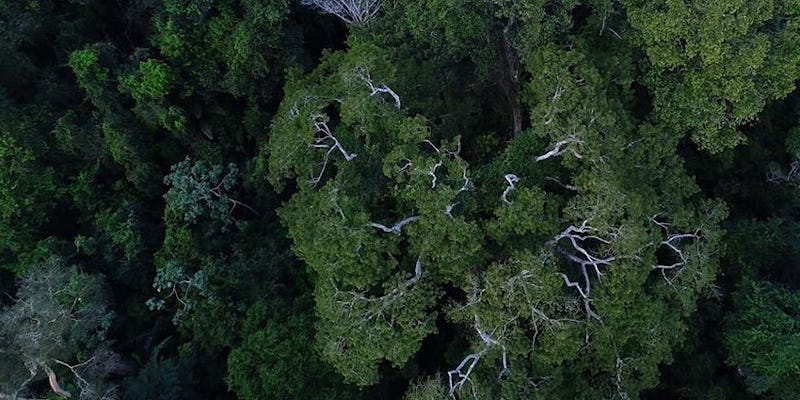UN-REDD and Operational Guidance: Engagement of Indigenous Peoples
In March 2009, the UN-REDD programme released a document titled “UN-REDD Programme Operational Guidance: Engagement of Indigenous Peoples & other forest dependent communities.”
The document includes much that is good, including references to free, prior and informed consent, the International Labour Organization’s Convention 169 and the UN Declaration on the Rights of Indigenous Peoples. But it fails to look at the realities faced by many Indigenous Peoples.
REDD-Monitor received the following note from John Palmer, Senior Associate, Forest Management Trust, outlining some of the omissions in the UN-REDD Operational Guidance on Indigenous Peoples. It is reproduced here in the interests of generating further discussion on the issues raised.
On 14-15 June 2009, UN-REDD held its second Policy Board meeting in Montreux, Switzerland. Among the items on the agenda was a discussion on the “Status of Operational Guidance on the Engagement of Indigenous Peoples and other Forest Dependent Communities – input received from stakeholders and coordination with FCPF [Forest Carbon Partnership Facility]”. REDD-Monitor looks forward to reporting on how these issues will be incorporated into the UN-REDD Programme.
Comments on the “UN-REDD Programme Operational Guidance: Engagement of Indigenous Peoples & other forest dependent communities”
Version dated 23 March 2009.
Most of this guidance seems to be unexceptional, even mundane. It does not convey much sense of appreciating the livelihoods and timetables of indigenous peoples, rather focusing on those who may have been legally appointed or elected to represent them and are (therefore) now based in urban settings and largely conforming to urban ways of working in committees.
I did not have a sense of UN-REDD appreciation of the mainly rural living of indigenous peoples, of the necessary response to seasonal timetables for agriculture and fishing, of people being away from home at their farms for weeks on end or dawn to dusk at some times of the year, and so not being available for meetings or for developing documents just when it would be convenient for urban-based bureaucrats. I noted that the Operational Guidance recommends that consultations should be linked to the project timetable, rather than the project timetable being responsive to the process and results of consultations.
I did not have a sense of appreciation of the personal effort needed to trek from farm or boat to meetings held in other villages or towns at the end of a long day farming or fishing or wood cutting, of the consequences of not having reliable and inexpensive broadband telecom, or of not having electricity at all.
Little attention was given to the process of selecting or electing IP representatives who might be particularly appropriate for REDD discussions. Not necessarily the village chief or elderly councillor, but perhaps someone young and bright and quick-thinking, comfortably literate and numerate.
Almost no attention was given to the effect of trying to meld urban-based committee processes with the perhaps quite different decision-making at family, clan and village levels. Little consideration also for the time it takes for these extraordinary notions of REDD to be internalized by IPs remote from urban politics. In Guyana, for example, there is certainly a Presidential threat to curtail traditional rotational agriculture through REDD, although the National Constitution prohibits tampering with Amerindian ways of living, as does the UN International Covenant on Economic, Social and Cultural Rights which Guyana ratified in May 1977. But I would guess that there are less than a dozen Amerindians (out of 70,000+ in the population of Guyana) who have any familiarity with the Constitution. And still very few Amerindians have any real idea of the protections and rights afforded to them by the Amerindian Act of 1951, revised substantially in 2006. For example, all Village Councils are empowered to develop a range of community by-laws for managing their communal natural resources, but I think less than 5 out of 133 Village Councils have done so since 1951. Even those <5 rarely use the by-laws. There are useful information boxes in the UN-REDD Operational Guidance on Free, Prior and Informed Consent and on Principles for Consultation and Engagement, but they did not address the situations where the IPs are detached from national political processes and interactions. There may be official processes for elections of representatives and organizations for local government, but these processes may be creations of urban systems and of little real relevance in IP communities. Indeed, there may be two or more parallel systems, one to show to visitors from towns and governments (including donors) and one or more systems which are more "real" and perhaps traditional to the IPs themselves, especially when the polities of IPs are weakly developed (or have been weakened by interactions with the dominant ethnic groups). No consideration seems to have been given in this UN-REDD Operational Guidance to situations where IPs are in conflict with other ethnic groups, or with neighbours of their own ethnic group, with commercial enterprises, or with governments themselves. It is quite unrealistic to suppose that IPs can form neatly homogeneous and conformist collectives; in my experience from childhood in European fishing villages, the opposite is more likely, with the most traditional villages being the most riven from family and clan quarrels whose origins may have been long forgotten.
John Palmer Senior Associate, Forest Management Trust





